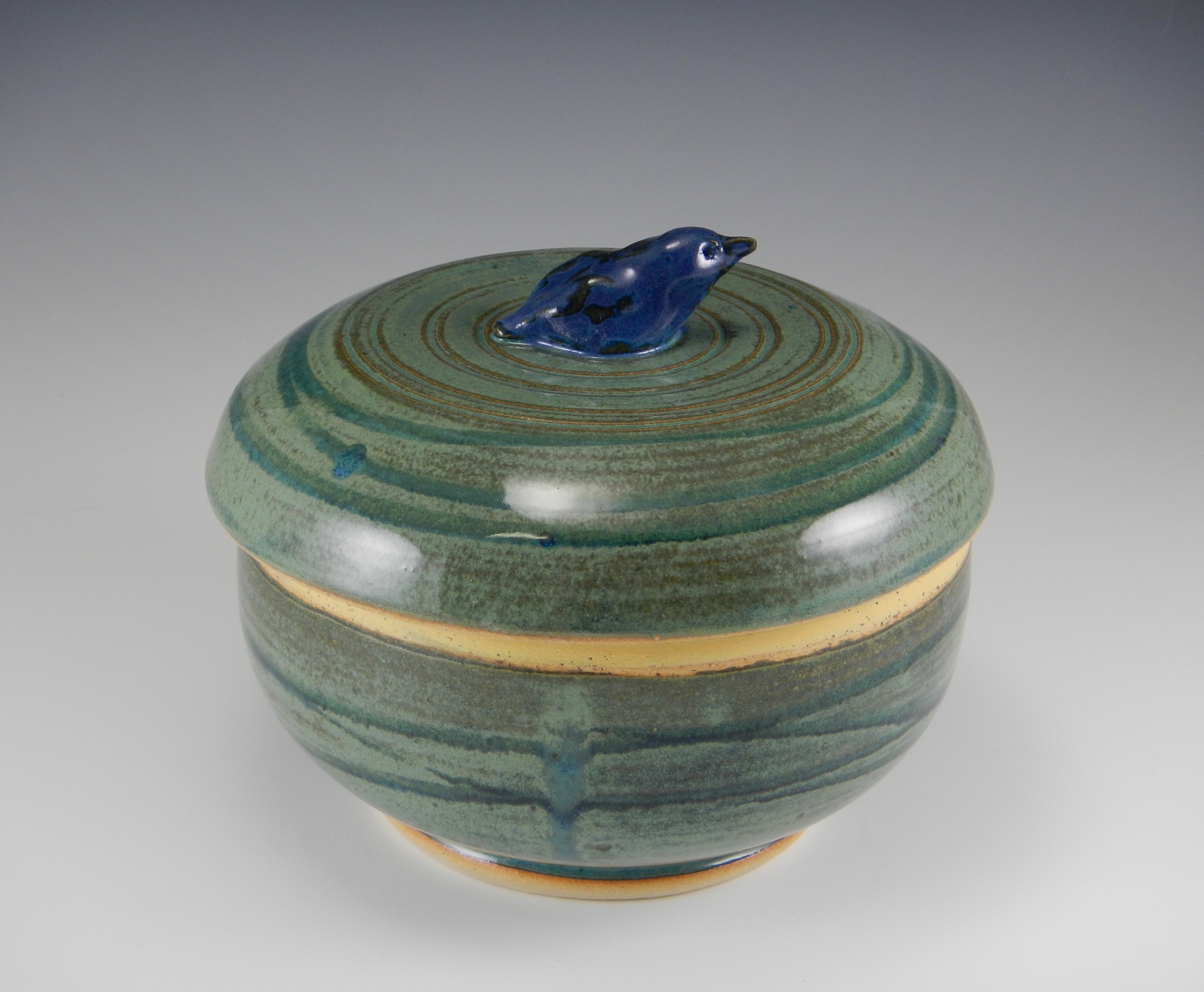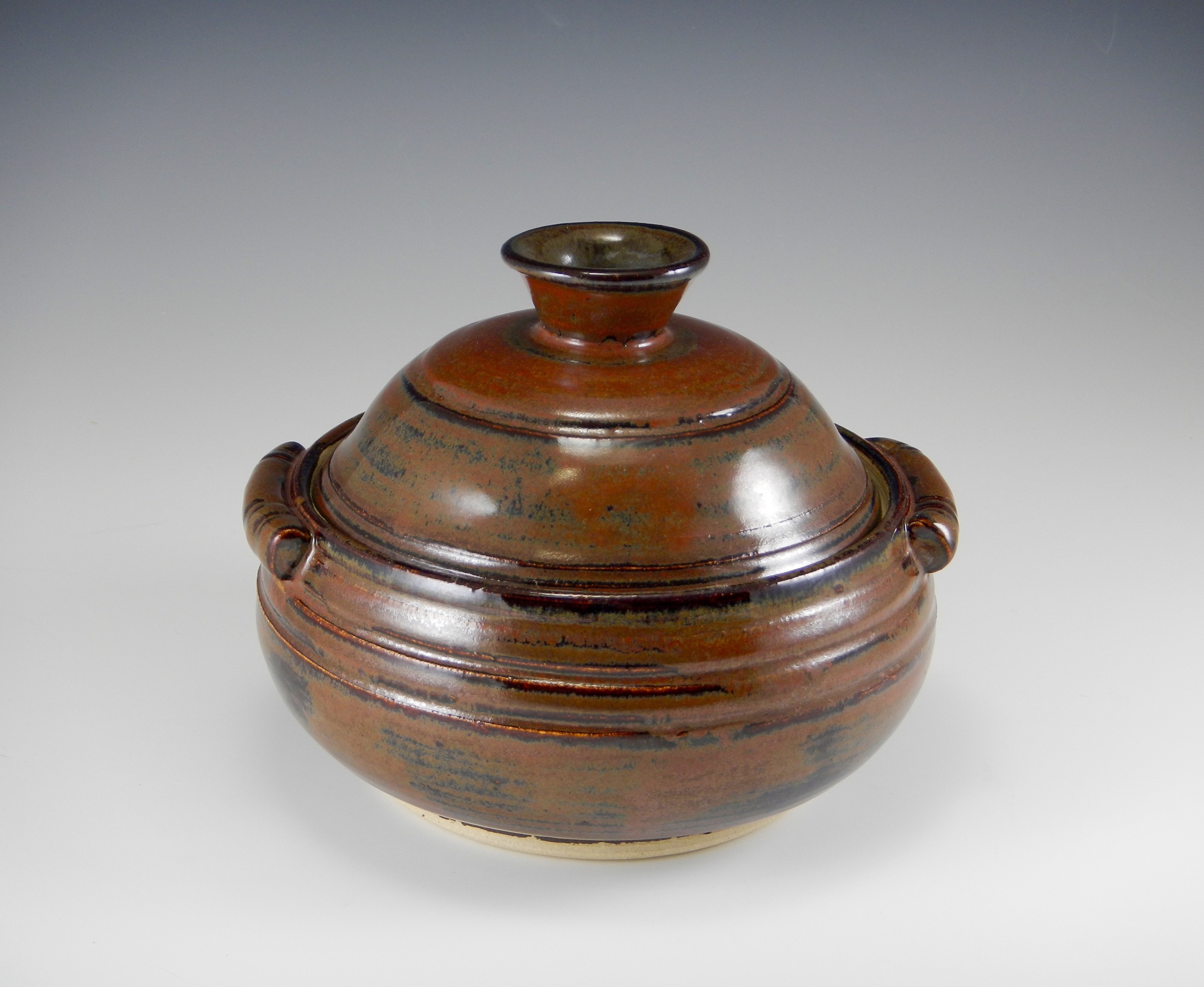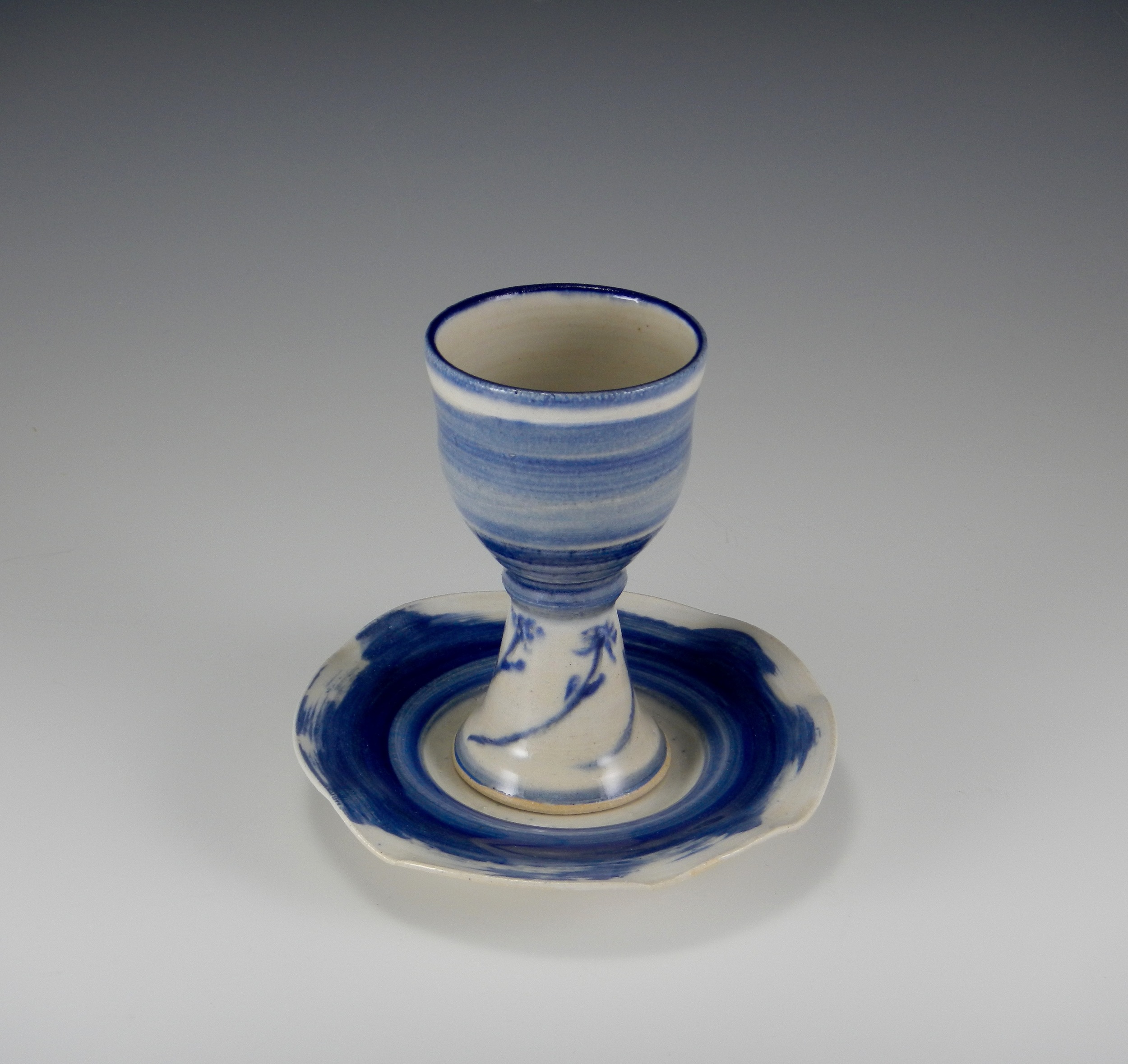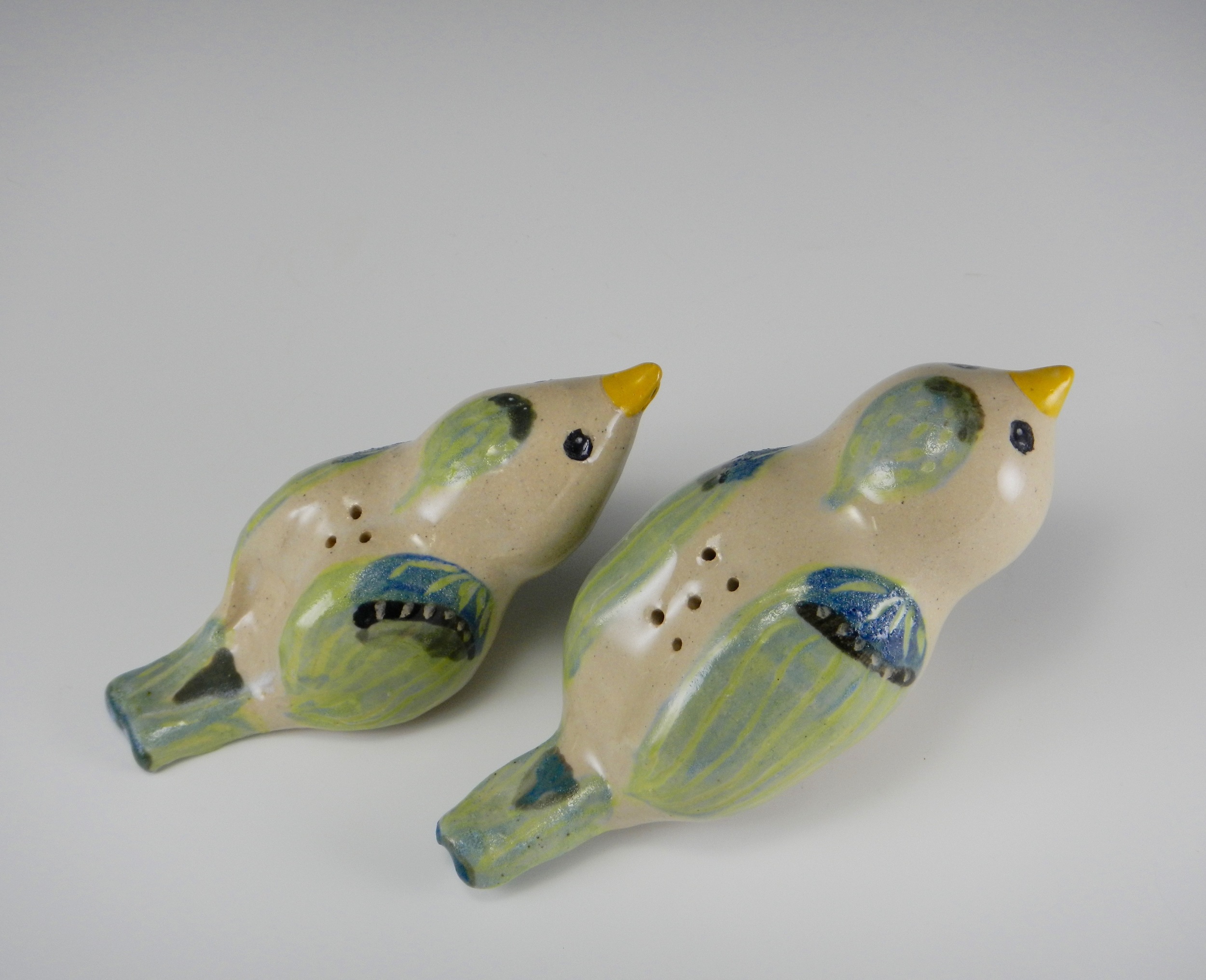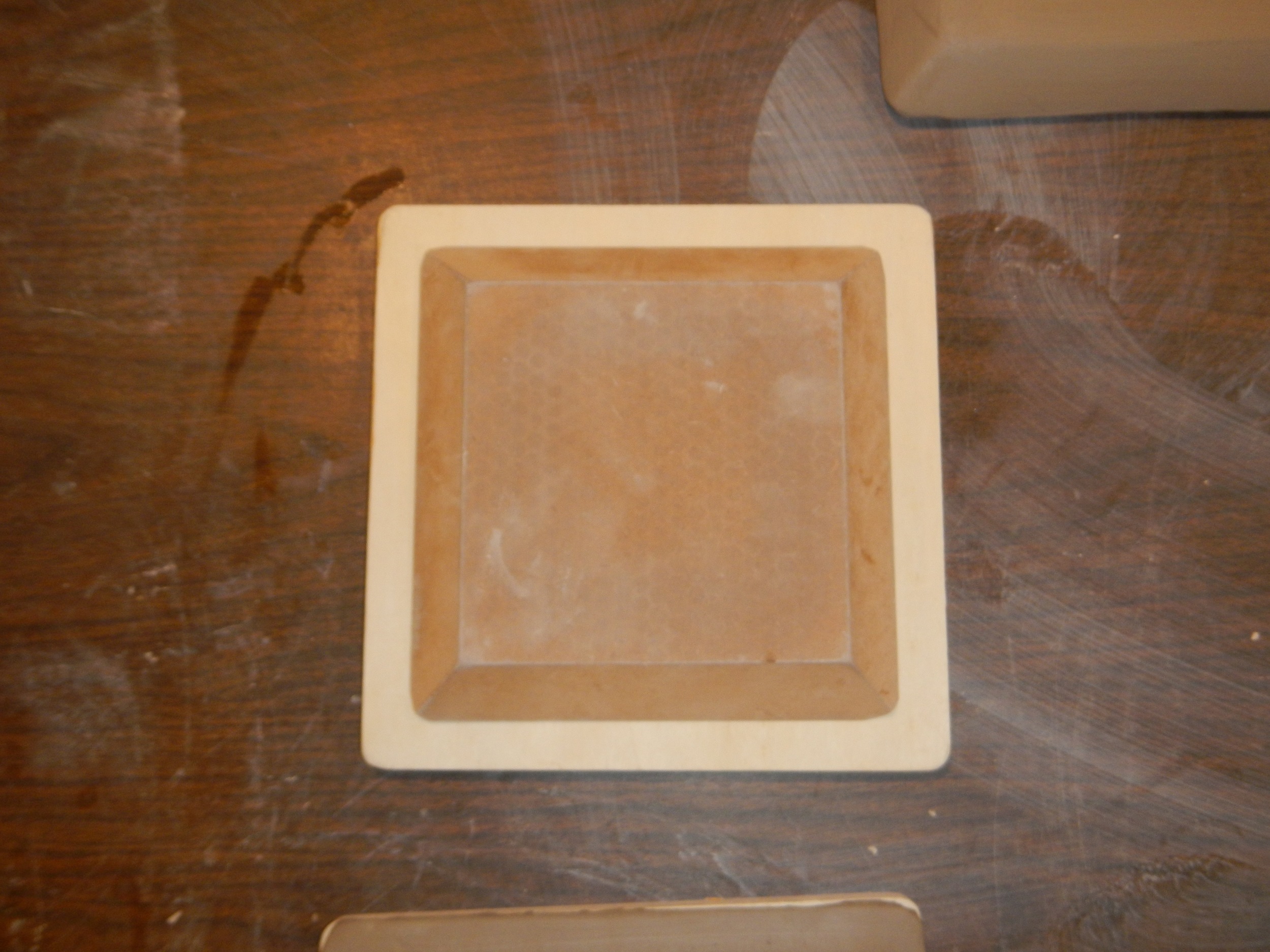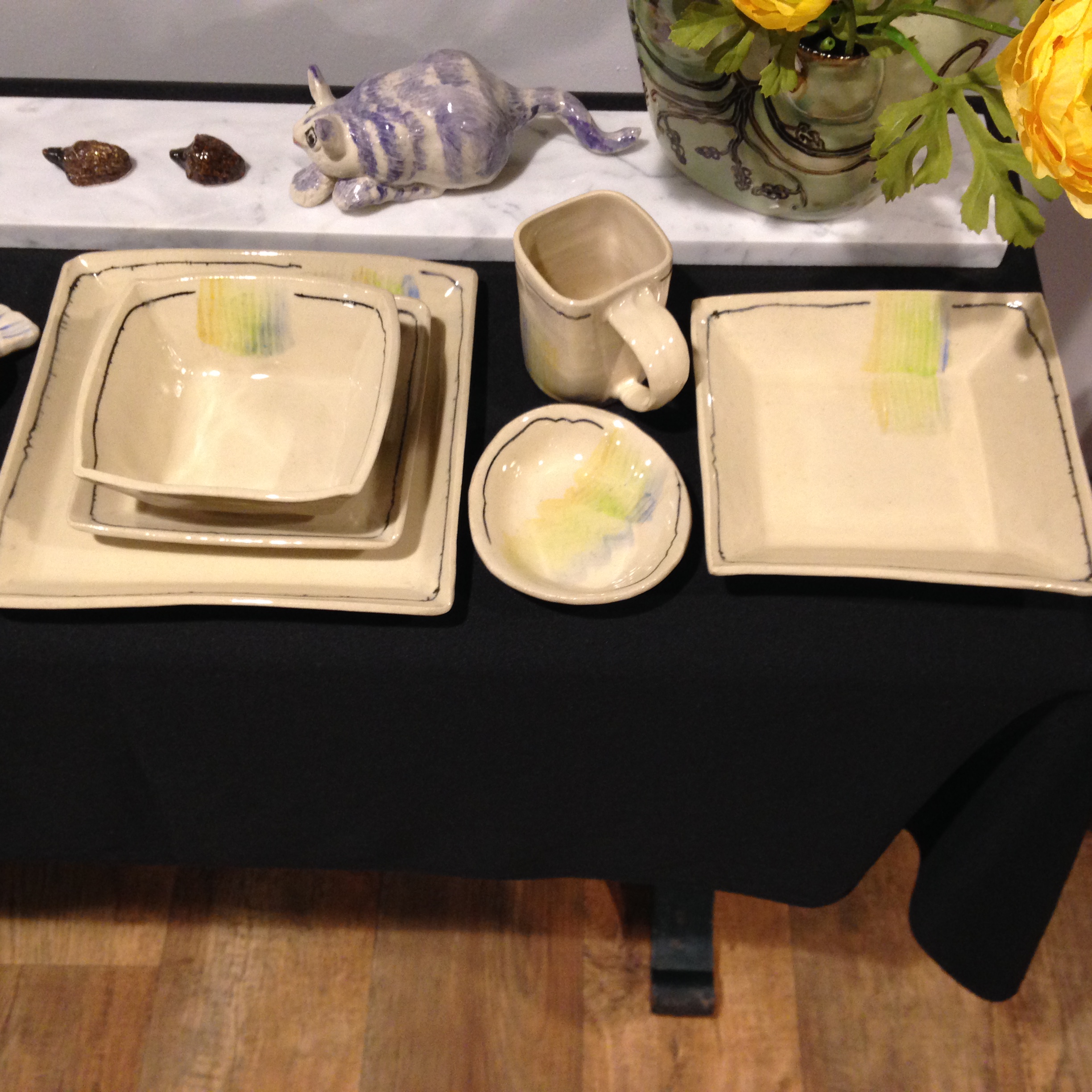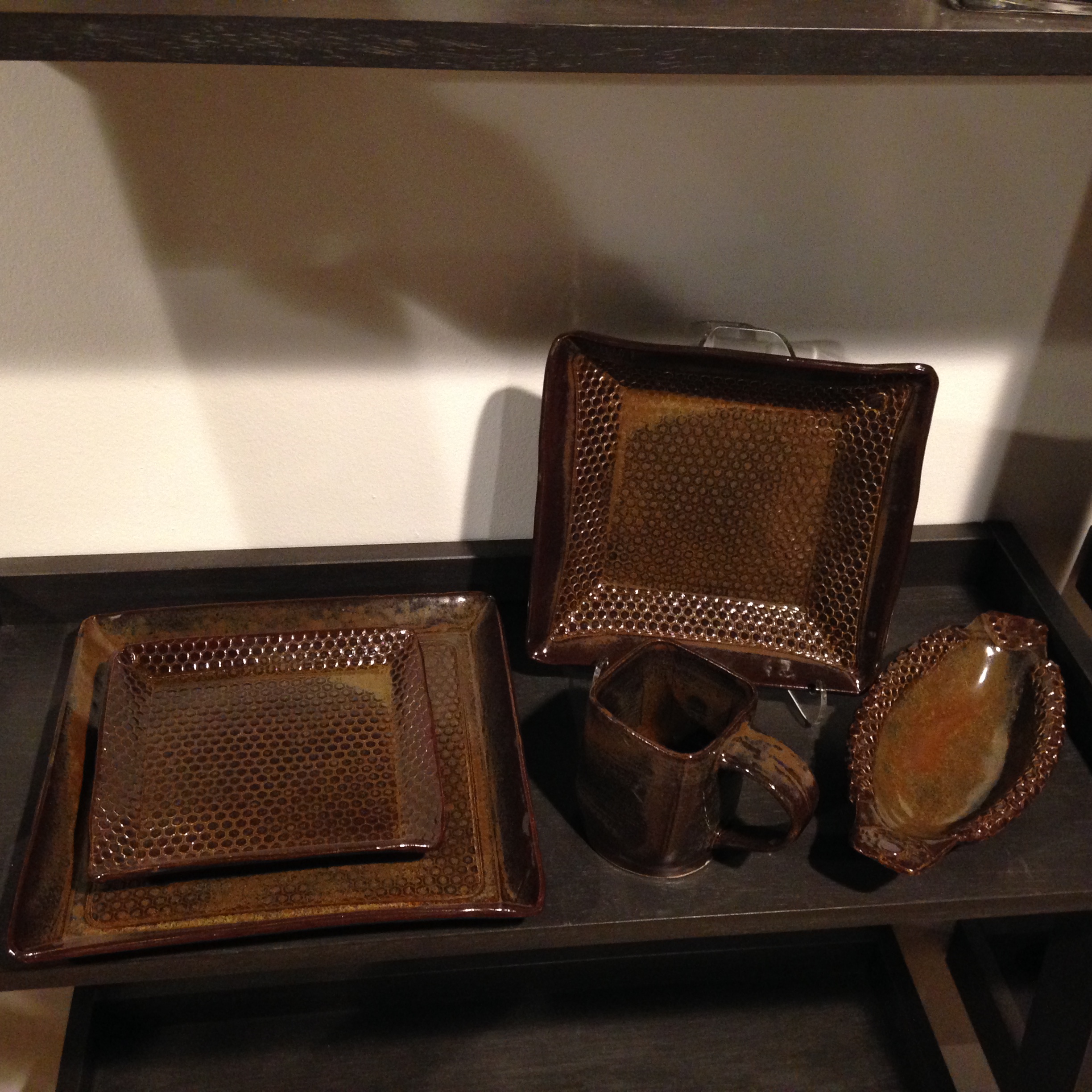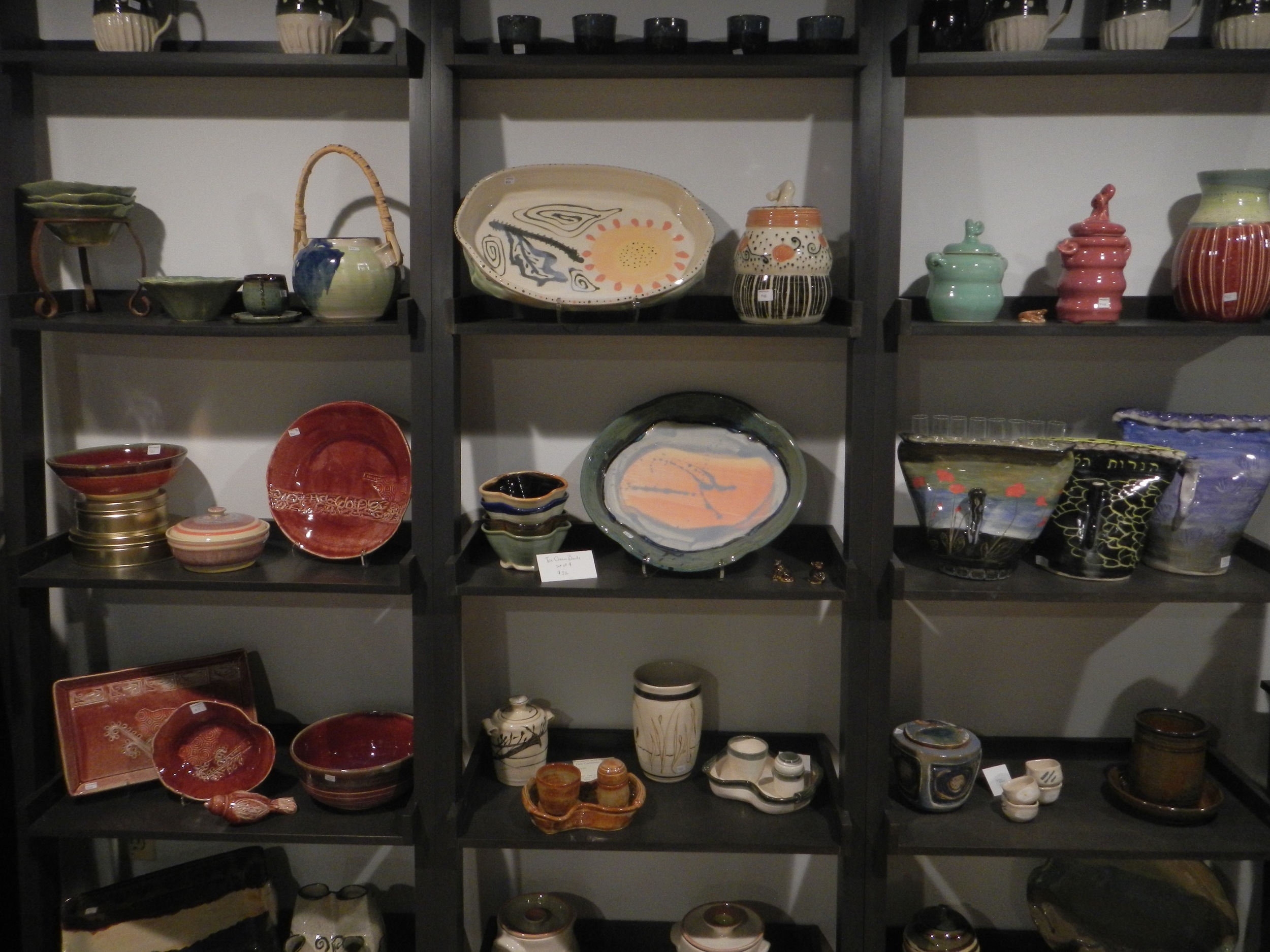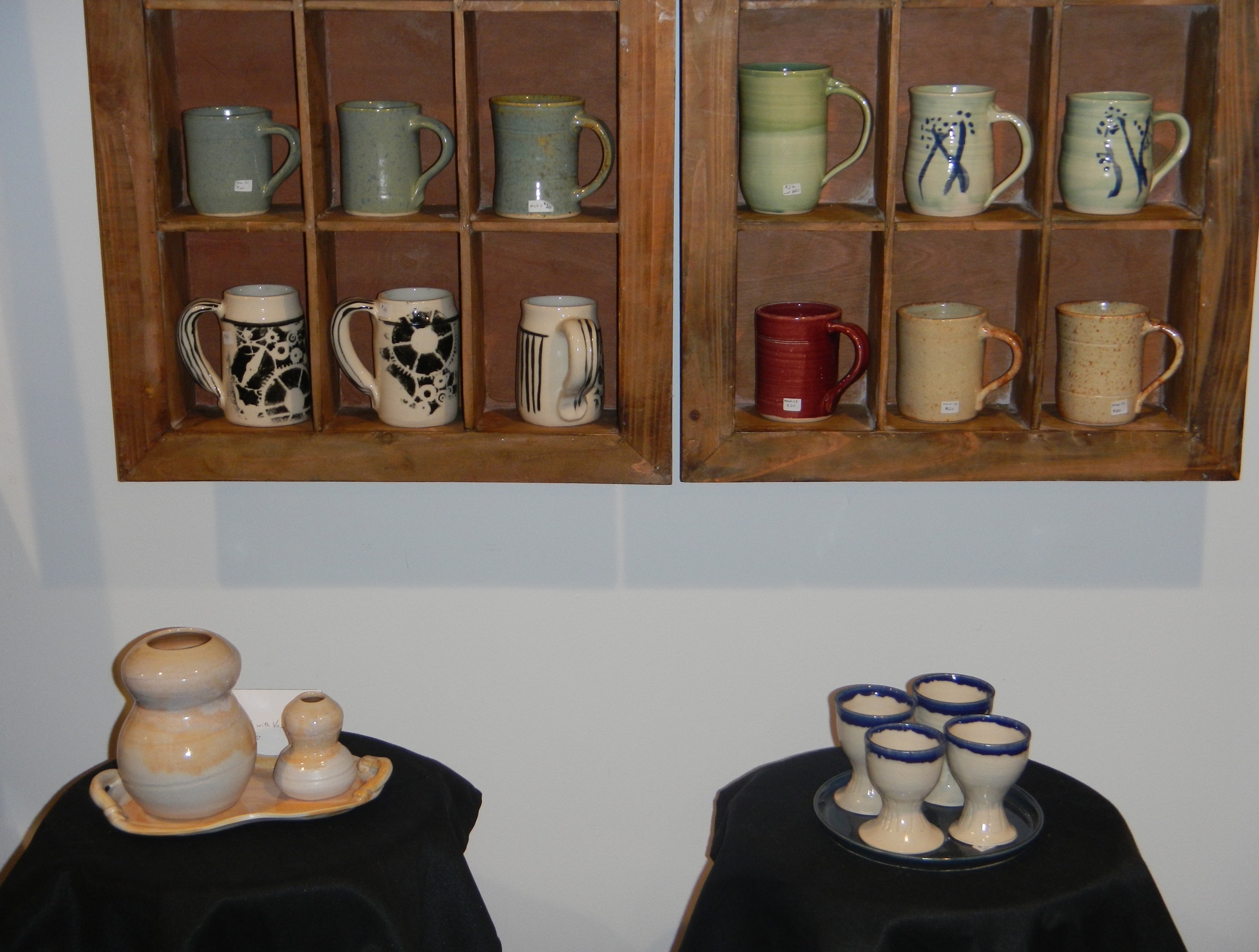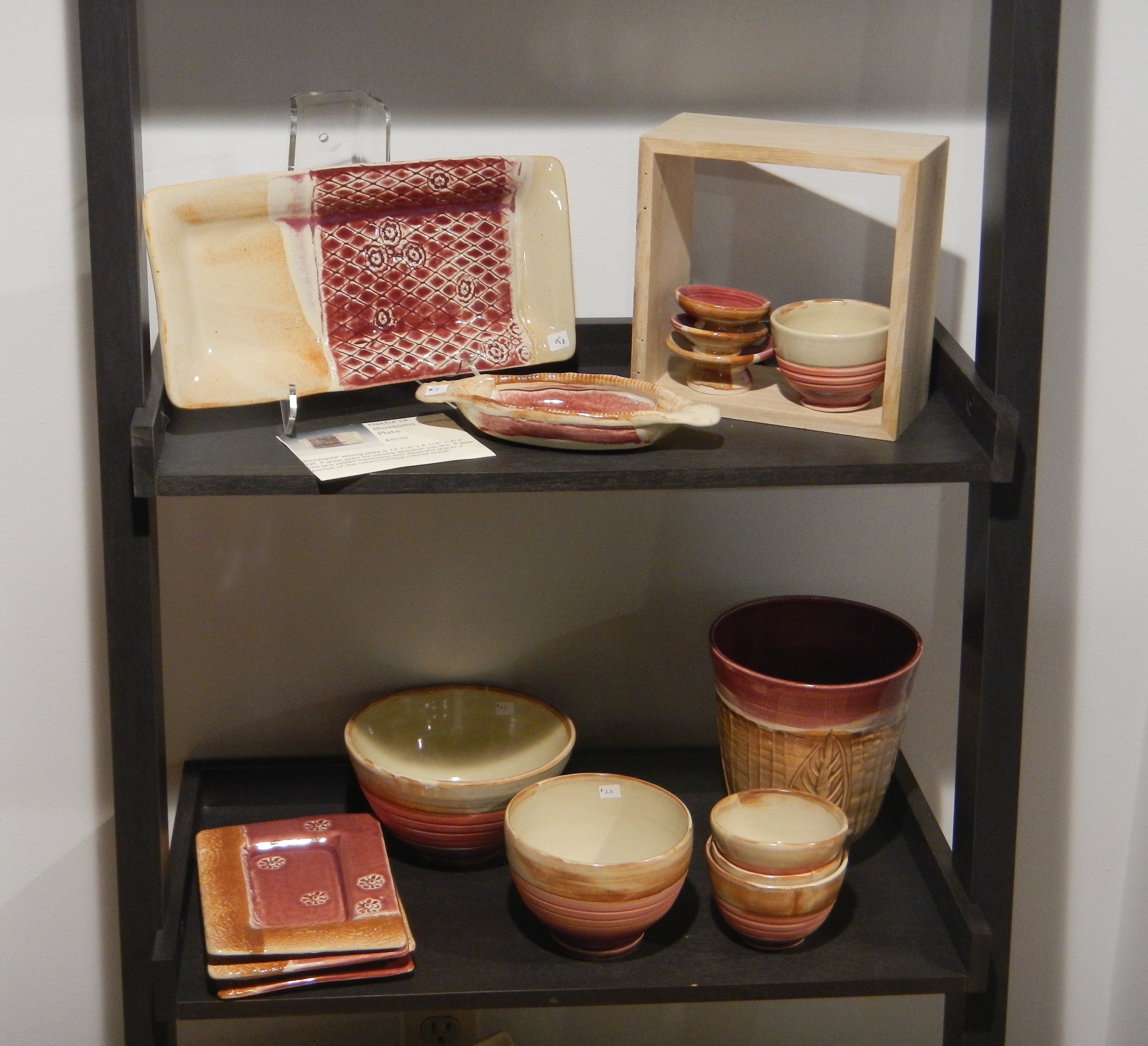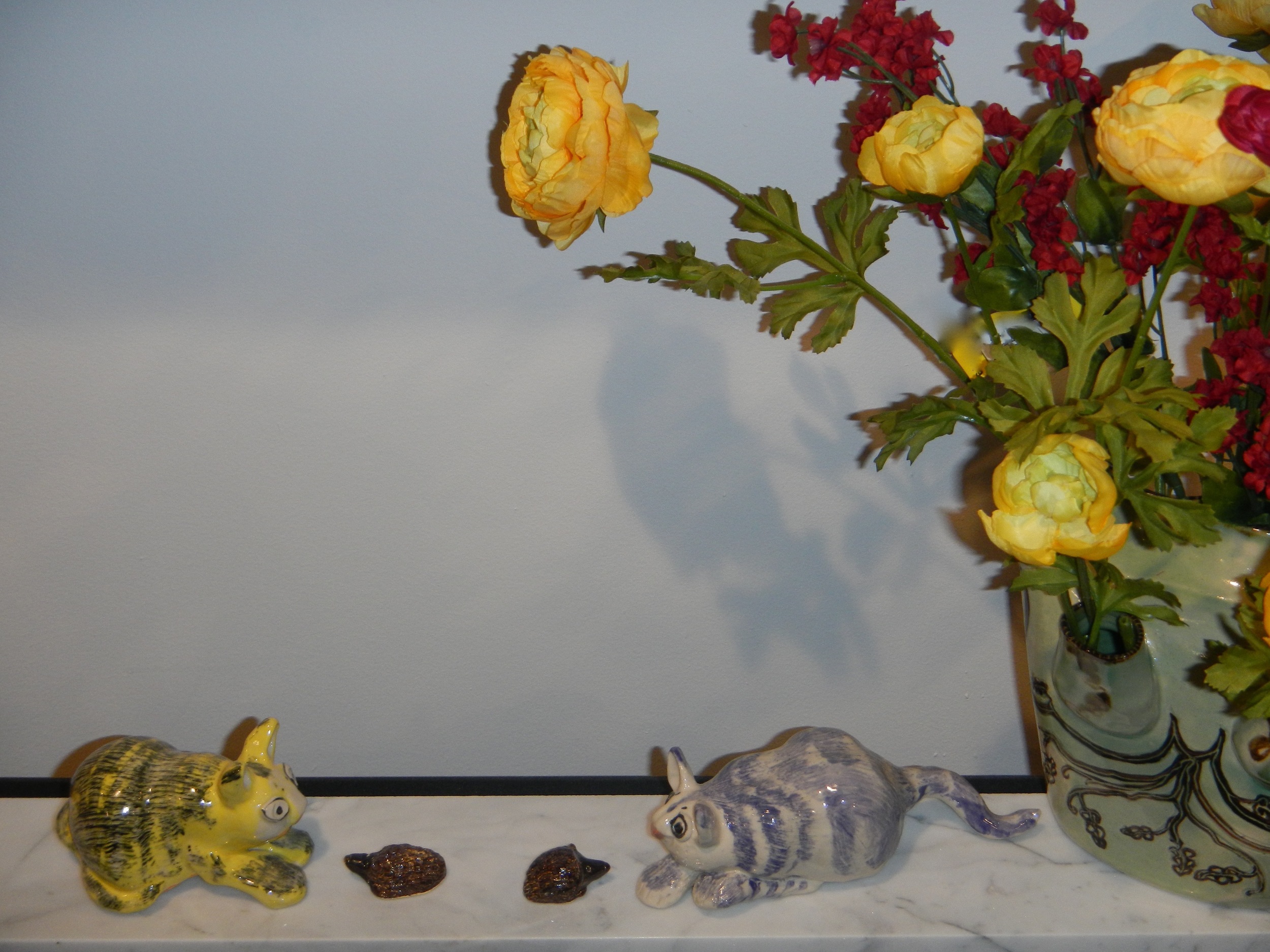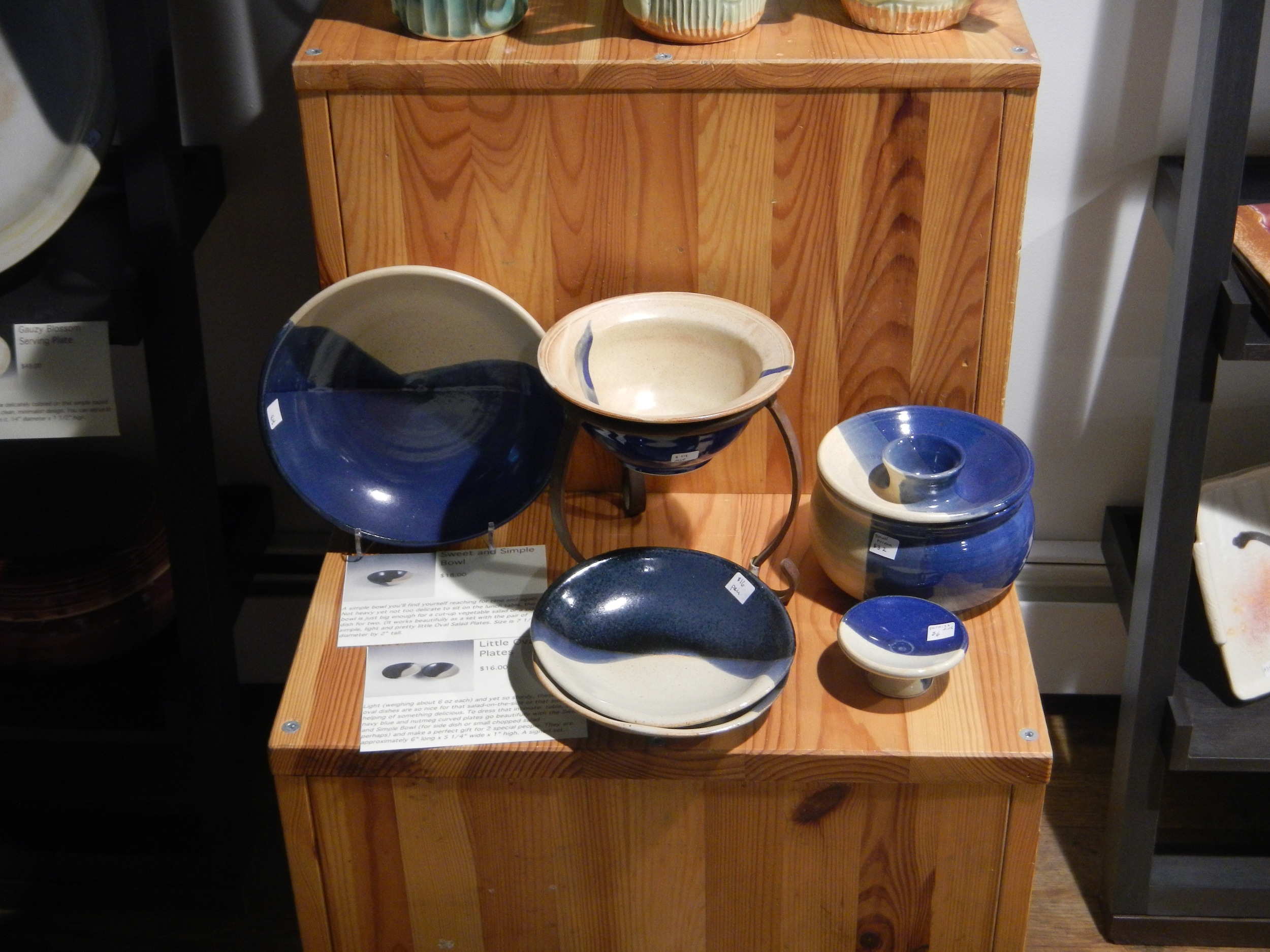What now? It's time to consider.
Seasonal orders are filled. Although two customers are not getting back to me, one has a deposit down and the other has to show up before Christmas to pick up the gifts she asked me to make, so I'm not worried. Everyone else has what they asked me for. What a relief!
Meanwhile, what "after the holidays" means in this studio is, I'm heading on to the next holidays! I'm thinking Passover now. And there are always Sabbath items- that comes every week and these things make great gifts. And in between matzah and Seder plates for Passover, and challah/bread baskets for Sabbath, and because many of my customers are not Jewish and don't need those things, I'll make the bowls and salt & pepper shakers and goblets and serving platters I like to make. Salad bowls are in short supply here after the sales recently, and I really love making those. A customer friend wants a set of dinnerware. In short, I will not be bored, and the website and Gallery Downstairs will be replenished, and happy customers become returning customers and friends.
It was a good pre-holiday sale season for me. I did shows and made sales I wouldn't have if I didn't come up out of the studio and "get out there". I shipped out some things via website sales, too, more than I expected. Some more went out of The Gallery Downstairs with in-person visitors. I kept track - that's new for me- of hours and what I worked on, so I can do a productivity study after 6 months and again in a year. In general, I'm pretty happy with the work I make lately, and enough other people seem to be, too. I guess I'm sort of an overnight success after 30 years. As long as I can do this work, and teach a little, and have friends and family to care about, "good" is 'not enough said'. Most of all, I have been married to my best friend for a long time now, and he helps dramatically to bring balance in my life, as well as provides health insurance and some essential solvency... Because it would be really hard to go it alone. Potters need friendships, and life balance to all that solo creating, and health insurance is irreplaceable.
Going forward in January, I plan to add a second electric wheel to the studio, so I can have 2 wheel-students at a time. People learn better if they are with a friend or colleague, I believe. Since I already have my trusty Lockerbie kick wheel, my workhorse for the last nearly-30 years, and Lockerbie makes motors for these at about a third the price of a new electric wheel... I do believe there is a 2nd electric wheel in my very near future, and I now dub it "Trusty Old Model K".
Because I like to leave you with pictures, here are four new tureens, small and I think kind of snazzy; a goblet in ever popular blue and white; and a pair of green salt & pepper birds.
See you in 2016!



